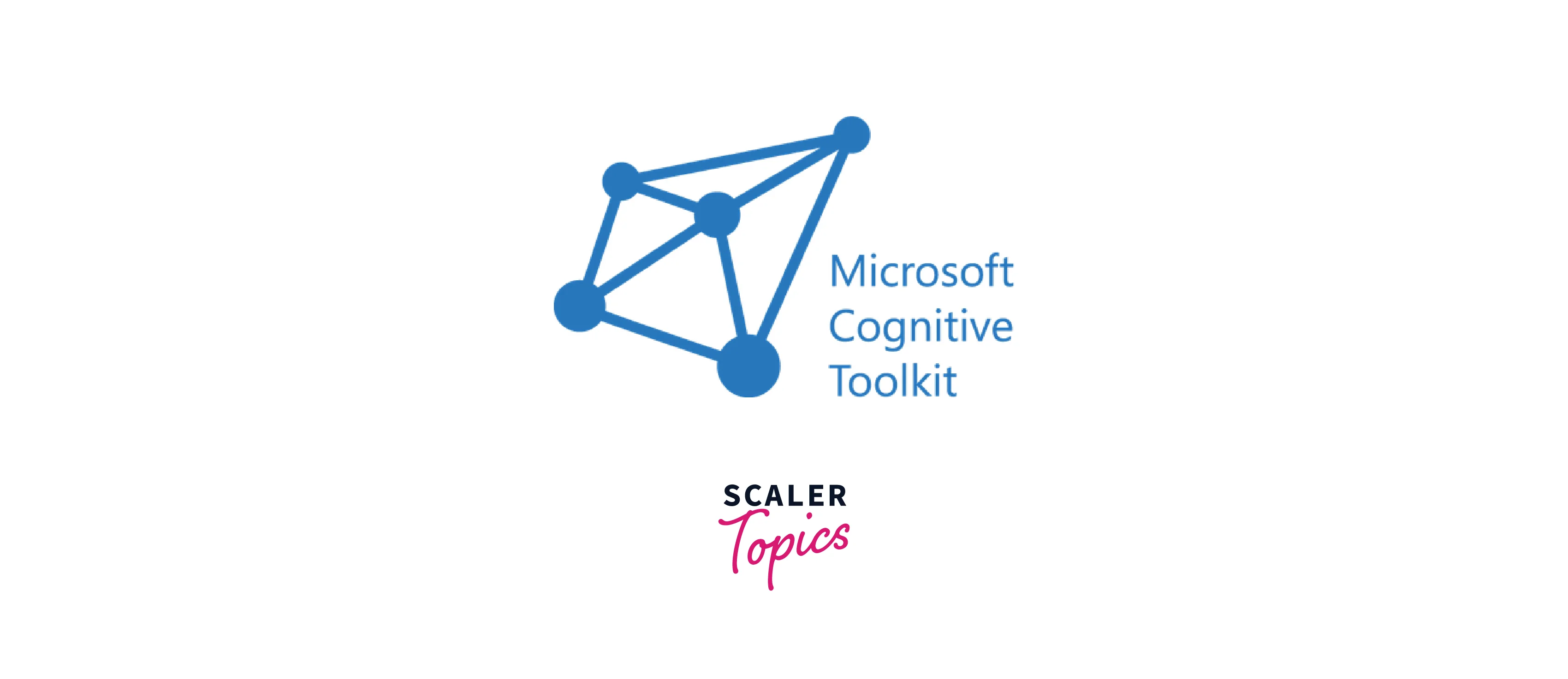AI Tools
Overview
Artificial Intelligence (AI) has rapidly gained popularity in recent years and is now considered one of the most promising technologies of our time. With the ability to mimic human intelligence, AI is transforming industries and revolutionizing the way we work and live. However, building AI systems requires specialized tools and technologies. In this article, we'll discuss some of the top AI tools available today.
Introduction to AI Tools
AI tools are software programs that facilitate the development, deployment, and management of AI applications. These tools are designed to automate complex tasks, reduce development time, and improve the accuracy and efficiency of AI models. AI tools are typically used by data scientists, developers, and researchers to build and test AI models.
List of Artificial Intelligence Tools
Below is a list of the most widely used artificial intelligence tools and frameworks. These artificial intelligence technologies are accessible for you to choose from based on what best matches your demands.
Scikit Learn

Scikit Learn is an open-source machine-learning library for Python. It provides a range of tools for data preprocessing, model selection, and evaluation, making it an excellent choice for beginners and experienced developers alike. Scikit Learn supports a variety of `machine learning algorithms, including classification, regression, and clustering, and provides a variety of tools for model optimization and evaluation.
One of the main advantages of Scikit Learn is its ease of use. It provides a simple and intuitive API for building and training machine learning models, making it easy for developers to get started quickly. Additionally, Scikit Learn has a large and active community of contributors who regularly release new features and updates, ensuring that it remains a popular and relevant tool in the field of machine learning.
TensorFlow
 TensorFlow is now the most popular deep-learning library. Google's machine learning framework is a Python-friendly open-source toolkit. It supports a wide range of use cases, including deep learning, reinforcement learning, and natural language processing. TensorFlow is widely used in industry and academia and has a large community of developers. It is one of the greatest AI development tools for numerical computing, which makes future predictions easier and more accurate.
TensorFlow is now the most popular deep-learning library. Google's machine learning framework is a Python-friendly open-source toolkit. It supports a wide range of use cases, including deep learning, reinforcement learning, and natural language processing. TensorFlow is widely used in industry and academia and has a large community of developers. It is one of the greatest AI development tools for numerical computing, which makes future predictions easier and more accurate.
In addition to its powerful capabilities for building and training deep learning models, TensorFlow also offers tools for deploying models to different environments. TensorFlow Lite is a version of TensorFlow designed for mobile and embedded devices, allowing developers to deploy AI models to smartphones, tablets, and other devices with limited computational power. TensorFlow.js is a JavaScript library for building and training models in the browser or on Node.js, enabling developers to create interactive AI applications that run in the browser.
Theano
Theano is a Python-based library that allows developers to define, optimize, and evaluate mathematical expressions involving multi-dimensional arrays efficiently. It is widely used for deep learning and neural network applications and can be used with other Python libraries such as NumPy and SciPy.
One of the main advantages of Theano is its performance. It is designed to be highly performant, allowing developers to train models quickly and efficiently. Additionally, Theano provides a range of tools for working with GPUs, making it an excellent choice for developers working on deep learning projects.
PyTorch

PyTorch is an open-source machine learning library that is widely used for deep learning applications. Developed by Facebook, PyTorch provides a flexible platform for building and training neural networks. It is easy to use and supports dynamic computation graphs, making it suitable for fast prototyping.
One of the main advantages of PyTorch is its ease of use. It provides a simple and intuitive API for building and training machine learning models, making it easy for developers to get started quickly. Additionally, PyTorch has a large and active community of contributors who regularly release new features and updates, ensuring that it remains a popular and relevant tool in the field of machine learning.
CNTK

Microsoft Cognitive Toolkit (CNTK) is a deep learning framework that is built on similar lines as TensorFlow. CNTK offers a wide range of APIs such as Python, Java, C, and C++, making it a versatile choice for developers. The framework mainly focuses on creating deep-learning neural networks and allows users to release and combine popular models, including feed-forward` DNNs, CNNs, and RNNs/LSTMs. With the help of stochastic gradient descent, CNTK enables automatic differentiation and parallelization across multiple servers and GPUs, making it easier for developers to create high-quality models.
Furthermore, CNTK offers open-source licenses, allowing anyone to try it out. The framework also offers a host of features such as cross-platform support, high performance, and scalability. With these features, developers can create models that can run on a wide range of platforms, from laptops to high-performance clusters.
Caffe
Caffe is a deep learning framework developed by the Berkeley Vision and Learning Center. It is widely used in computer vision applications and provides a simple and intuitive interface for building and training deep learning models.
Caffe is a complex cognitive system that emphasizes pronunciation, speed, and measurable quality. Google's DeepDream requires the Caffe Framework. This structure is a BSD-approved C++ library with a Python-like interface.
Apache MXNet

Apache MXNet is an open-source deep learning library that provides a scalable and efficient platform for building and training neural networks. It supports a wide range of use cases, including computer vision, natural language processing, and speech recognition. MXNet is known for its speed and scalability and is widely used in industry.
MXNet is a scalable AI framework that supports multi-GPU and multi-machine training. It has numerous helpful features, including the ability to write custom layers in high-level languages and to employ forgetful backdrop to trade computation time for memory. It is not directly regulated by a huge business because it is an open-source, community-developed framework, which is a good thing. MXNet also supports TVM, allowing it to be deployed on a variety of different device types, making it a versatile and powerful AI tool.
Keras

Keras is a high-level neural network library that is widely used by developers for building effective neural networks using Python. It provides an abstract structure that makes it highly versatile and compatible with different frameworks. As it uses TensorFlow as its backend, Keras is well-suited for tasks such as selecting appropriate architectures and optimizing outcomes for image recognition problems. Keras is an extremely user-friendly tool that runs seamlessly on both CPU and GPU, making it one of the best open-source Artificial Intelligence tools used today.
It is particularly suitable for fast prototyping, facilitating the completion of state-of-the-art `experiments from start to end with little or no delay. Developers from a wide range of backgrounds can get their hands on creating their scripts using Keras, as the tool itself deals with the back end, putting no limitations on skills for using the tool. However, Keras is not suitable if you need to get into its low-level computations of it. In that case, TensorFlow is your way forward.
OpenNN

OpenNN is an open-source library that provides a flexible platform for building and training neural networks. It supports various types of neural networks, including feedforward, recurrent, and convolutional models. OpenNN is known for its ease of use and can be integrated with other `programming languages such as C++ and Python.
OpenNN delivers an array of complex analytics, ranging from absolutely beginner-friendly to something designed for expert engineers. It includes a tool for sophisticated analytics called Neural Designer, which gives graphs and tables to help users comprehend data entries.
AutoML

AutoML stands for Automated Machine Learning, which refers to a set of tools and techniques that automate the process of building, training, and deploying machine learning models. AutoML aims to make the machine learning process more accessible to non-experts by automating complex and time-consuming tasks such as data preprocessing, feature selection, algorithm selection, and hyperparameter tuning. This allows data scientists and developers to focus on more critical and creative aspects of the machine-learning process, such as data exploration and model interpretation.
AutoML tools use advanced algorithms and statistical techniques to automate the process of building machine-learning models. These tools allow users to specify the data they want to work with and the desired outcomes, after which the tools take care of the rest. AutoML algorithms can automatically handle tasks such as data cleaning, feature selection, and model tuning. Some popular AutoML tools include H2O.ai, Google's AutoML, and TPOT.
H2O
H2O is an open-source machine learning platform that is used for building and deploying advanced predictive analytics and machine learning models. It provides a user-friendly interface that allows users to build models without having to write complex code.
H2O supports a wide range of machine learning algorithms, including deep learning, gradient boosting, generalized linear models, and others. It also includes powerful data visualization tools, which allow users to easily explore their data and gain insights into their models.
H2O is designed to be highly scalable, allowing users to build and deploy models on large datasets using distributed computing. It can be used in a variety of applications, including fraud detection, customer churn prediction, and predictive maintenance.
Google ML Kit

Google ML Kit is a powerful and flexible mobile SDK that enables developers to integrate AI capabilities into their mobile applications. With its pre-trained models for image and text recognition, object detection, and face detection, developers have access to a wide range of tools to build advanced features into their apps.
The custom model API is a particularly useful feature that allows developers to train and deploy their models on mobile devices. This empowers developers to create models that are tailored to their specific needs, improving accuracy and reducing latency. The kit is compatible with both Android and iOS phones and can be used through Android APIs operating on the device or in the cloud.
Murf
Murf, one of the most popular and amazing AI voice generators on the market, is at the top of our list of the finest AI tools for business. Murf allows anybody to convert text to speech, voice-overs, and dictations, and it is utilized by a wide spectrum of professions including product developers, podcasters, educators, and business executives.
The text-to-speech generator features a full AI voice-over studio, as well as an integrated video editor, allowing you to make a video with voiceover.
FastAI

Fastai is an open-source machine-learning library that provides a high-level interface for building and training deep-learning models. It is built on top of PyTorch and offers tools for data preprocessing, model training, and deployment. Fastai makes it easy for users to build and train complex models with minimal coding. It also includes pre-trained models for various tasks and offers extensive documentation and community support, making it a great resource for both beginners and experienced practitioners.
One of the unique features of fastai is its use of transfer learning, which allows users to take pre-trained models and adapt them to new tasks with relatively small amounts of new data. This approach significantly reduces the time and resources required for training models from scratch.
Hugging Face

Hugging Face, Inc. is an American firm that creates tools for creating machine learning applications. It provides a range of tools for building and training NLP models, including text classification and language translation. Hugging Face supports a variety of state-of-the-art NLP models, such as BERT and GPT-2, and provides a range of tools for model optimization and evaluation.
One of the main advantages of Hugging Face is its focus on NLP. It provides a wide range of tools for building and training NLP models, making it an excellent choice for developers working on NLP projects. Additionally, Hugging Face has a large and active community of contributors who regularly release new features and updates, ensuring that it remains a popular and relevant tool in the field of NLP.
Weights and Biases
Weights and Biases is a flexible machine-learning platform that allows developers to track and visualize experiments, providing tools for logging training and evaluation data, accessing a centralized dashboard, and integrating with other tools. It's particularly useful for large projects and provides visualization tools for gaining insights into models.
GPT
Generative Pre-trained Transformers (GPTs) are a class of natural language processing models that have been pre-trained on vast amounts of textual data to generate human-like text in response to given prompts. They are typically based on the transformer architecture, which is a type of neural network that is highly effective for sequence-to-sequence tasks, such as language translation.
Applications of GPTs include language translation, content creation, chatbots, and virtual assistants. By integrating GPTs into such applications, they can produce more human-like and natural language interactions, which can enhance the user experience. As GPTs continue to evolve, their capacity and performance will increase.
OpenAI Gym

OpenAI Gym is another OpenAI tool. It is a toolkit for developing and comparing reinforcement learning algorithms. Reinforcement learning is a type of machine learning in which an agent learns to take actions in an environment to maximize a reward signal. OpenAI Gym provides a range of environments for developers to test and benchmark their reinforcement learning algorithms.
Conclusion
- The field of artificial intelligence is constantly evolving and there are numerous tools available for developers to build and train AI models.
- Scikit Learn, TensorFlow, PyTorch, and Hugging Face are some of the most popular and widely used AI tools for machine learning and deep learning applications.
- FastAI, OpenNN, and H2O are also emerging as promising tools in the AI landscape. These tools provide developers with the flexibility and power to build highly sophisticated AI models for a wide range of applications.
- With the help of AI tools, businesses can benefit from improved efficiency, better decision-making, and `enhanced ccustomerexperiences.
- As technology continues to evolve, we can expect to see even more advanced and innovative AI tools emerging soon.
